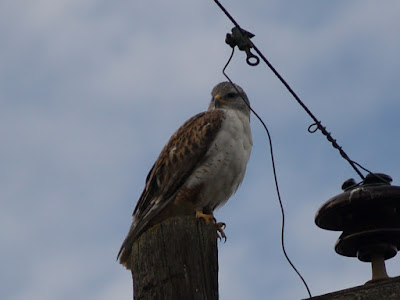
Sunday, February 19, 2012
PRBO Science
Tuesday, February 7, 2012
A Funny Thing Happened on the Way Home from Birding
Wednesday, February 1, 2012
Timberhill Park - Napa CA
One afternoon this week I searched out a local city-administered piece of open space called Timberhill Park. It is located in the hills of west Napa and is a surprisingly beautiful, if small, slice of what this valley once was. At one time this would have been a part on someone's ranch. There are still grazing cattle in the area and evidence that what are now just tracks and trails for walking were once used by vehicles. It doesn't take long to walk the loop around the hilltop summit of the park, at a brisk pace it can be done in as little as a half-hour. But the view from the top of the knoll is quite nice. As I looked out over the valley I found myself doing what I always seem to do in these situations, wondering what it must have looked like before we put the stamp of human occupation on it. Long before the arrival of European and American settlers, the Native Americans used this land to their advantage but they did so in a far less invasive manner than first the Spanish then Mexican and finally Americans who settled here. I like to think of what it might have looked like pre-Clovis or pre-Solutrian if you subscribe to that theory. Imagine the view and what you would have seen if you were the first human to set eyes on this landscape.
As I completed my loop around the park I had noted only a few birds including Black and Say's Phoebe, a Savanna Sparrow, many Lesser Goldfinches, and a few Vultures. I had heard that you could see Varied Thrushes here and I had yet to see one in Napa County. The last part of the loop brings you back down into the gully that is the headwaters of Redwood Creek, a lovely woodland laced with the strong scent of the California Laurel. This is where I would find my Varied Thrush if there was one about, and low and behold there was. Moving through the trees ninja style, making no sound at all. Just a quick pose out of cover to say he was here and then gone. A nice bird that reminds me of wet winter days on the campus of HSU where I could always find one on the edge of the forest that was our neighbor.



